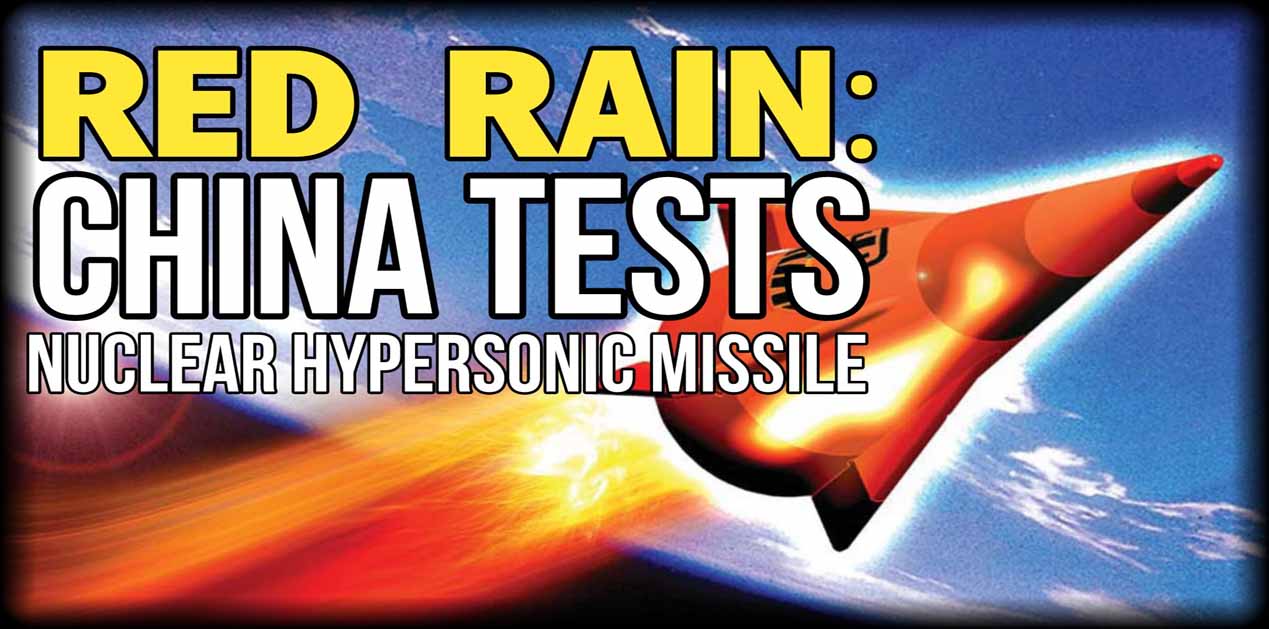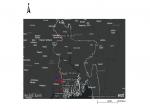Ballistic missiles provide stable and a trustworthy vehicles for delivery of conventional as well as nuclear warheads with precision and accuracy through an entire spectrum of ranges and altitudes. Countries with viable defence capabilities therefore maintain an entire continuum of ballistic missiles with capabilities as defined by their operational requirements.
Though the Chinese ballistic missile programme has moved from strength-to-strength ever since its inception, the latest successful testing of hypersonic missiles (even ahead of the USA) adds a totally new threat dimension, the counter of which is not likely to be available in the immediate future till the technology catches up with the defenders in an eternal cause-effect cycle.
This article takes a brief look at the Chinese ballistic missile programme flagging its growth till the hypersonic missiles and further. Against this backdrop, it tries to figure out what it could mean for India.
Chinese Missile Development Programme
The history of Chinese missile development dates back to its efforts to make its first nuclear bomb; according to Xinhua sources the great decision was taken in 1955. The erstwhile USSR provided the Chinese with some SS2 ‘Sibling’ Short Range Ballistic Missiles (SRBMs) in mid 1950s. The Chinese built a small number of missiles called ‘Dong Feng’-1 (DF-1); Dong Feng in Chinese means ‘East Wind’. The US designation of these missiles runs with a prefix of CSS or SS. The first DF-1 was launched in 1960. Thereafter, the Chinese successfully launched guided missiles in Oct 1963.
Presently, China has a well-developed ballistic missile programme to support its minimum nuclear deterrence policy. Chinese short, medium, intermediate range and inter-continental ballistic missiles (SRBMs, MRBMs, IRBMs, and ICBMs) are seen as both conventional as well as, nuclear delivery systems.
China’s ballistic missiles range from 150 km SRBM to 12000+ km ICBM. These include DF1 (SS2 - SRBM) - range 550 Km with 500 kg payload, DF2 (CSS1- MRBM) - range 1250 Km with a payload of 15-20 kiloton (KT) nuclear warhead, DF 3( CSS 2- IRBM) - range 2500-2800 km with 2000 kg (or thermonuclear) payload, DF4 (CSS 3- two stage ballistic missile) - range 5500-7000 Km with 3 mega ton (MT) nuclear payload , DF 5 (CSS 4 - ICBM) range -12000 Km with 3 MT nuclear warhead, DF 11 (CSS 7 - road mobile SRBM) - range 300 km (advanced version - 825 Km) with 800 Kg pay load, DF 12 (CSS X-15 - SRBM)- range 400-420 Km ( officially announced due to MTCR restrictions - 100-280 Km with 400 kg payload, DF 15 (CSS 6 - SRBM) range 600 Km with 500 kg payload, DF 16 (CSS 11- MRBM) - range 800-1000 Km with 1000-1200 kg warhead, DF 21 ( CSS 5- MRBM also developed as SLBM) - range 2500 km with 500 KT warhead, DF 25 (two stage solid fuelled IRBM) - range 3200 Km with up to three nuclear/conventional warheads, DF 26 (solid fuelled IRBM) -range 3500 km warhead not known , DF 31( CSS 10- road mobile solid fuelled ICBM) - range 11000+km with 1000 KT warhead (or up to three 15-150 KT MIRVs) , DF41 ( CSS X 10 - next generation ICBM) - range 12000- 14000 km with single/three/six/ten MIRV warheads1.

In addition to ballistic missiles, China continues to produce and purchase an array of sophisticated and accurate cruise missiles, including the DH-102 and YJ-623 land-attack cruise missiles and the Russian SS-N-22/SUNBURN supersonic air-launched cruise missile4. The SS-N-27B/SIZZLER5 supersonic air-launched cruise missile is placed on China's KILO-class diesel electric submarines purchased from Russia. The YJ-62C, a new variant of the YJ-62, has a range of 150 nautical miles; China has reportedly deployed some these missiles at Woody Island in South China Sea6.
The Hypersonic Dimension
Hypersonic missiles are such missiles that are capable of flying faster than 5000 km/hr without losing manoeuvrability and can fly lower than the traditional ballistic missiles. Due to these two capabilities, they are very difficult to detect and destroy. This is so because, firstly by flying lower than conventional ballistic missiles they tend to avoid radar detection and secondly, owing to their tremendous speed , these weapons provide extremely less time to the ballistic missile defences to react and launch the counter in time. Boost and post boost phase intercepts in case of hypersonic missiles are remote possibilities. Such missiles are expected to be capable of destroying targets anywhere on the planet within an hour of getting data and permission to launch.
Open sources report that China has been testing the DF 17 - a ballistic missile combined with a Hypersonic Glide Vehicle (HGV). This weapon is reported to have been tested at least at two occasions. In one of the tests, the missile's payload flew to a range of approximately 1400 km before making a successful impact at a site in Xinjiang Province "within meters" of the intended target7. Since the HGVs fly low , they do not enter space. These come shooting down on the targets within the earth's atmosphere at hypersonic speeds posing a great challenge to early warning satellites and missile defence systems. It is for this reason that compared to conventional ballistic missiles, HGVs are more complex and difficult to intercept.

Bejing based military analyst Zhou Chenming reported in South China Morning Post that HGV technology has become a part of the nuclear strategy between world's three big nuclear powers. HGV warheads could be used with different type of ballistic missiles including ICBMs like DF 41. HGV warheads could also be used to destroy anti-missile systems. According to US intelligence estimates, DF 17 is expected to reach initial operating capability by around 2020 with the weapon capable of delivering both the conventional, as well as, the nuclear warhead.
Implications for India
Two inferences from the aforesaid are obvious:
1. With the range reach and altitude capability at hand, Chinese ballistic missiles not only cover every target on the Indian subcontinent but far beyond into the asia-pacific region. This ballistic missile arsenal is soon likely to get HGV warheads adding a new dimension to the threat.

2. Besides the delivery means (as described above), the other two vectors that constitute the "strategic capability", namely the warheads and the battle management command and control (BMC2) wherewithal are known to be in place.
Our sensors, shooters and battle management systems of the indigenous ballistic missile defence (BMD) system, codenamed "Programme AD" which developed a capability of taking on ballistic missiles with a range of 2000 km in Phase 1 and up to 5000 Km in Phase 2 are basically not designed to handle HGV type of warheads in terms of the reaction time available for surveillance, tracking and end game.
Fortunately, in the domain of strategic systems, the action-reaction equation is counted in one-on-one mode. Keeping our stance of No First Use (NFU) in mind, if we have the potential to absorb the first strike and still retain a credible retaliatory capability to cause unacceptable punitive damage, the deterrence is in place. A potential adversary is likely to be deterred in making the first move (with conventional or unconventional warheads and with a choice of delivery means hypersonic or otherwise) if he is sure in his mind of assured retaliation in the manner described above resulting in mass casualties which may be unacceptable to him on multiple counts. This is the essence of deterrence equation. That said, while we may in the future grow our wings in the BMD domain to take on the HGV warheads, the requirement for the immediate is to ensure credible second strike capability in terms of warheads, delivery means, survivable BMC2 infrastructures and disaster coping mechanisms.
In the end, while we may draw some comfort from the declared Chinese NFU stand as well, it will be prudent to draw a line of distinction between capability and intentions when it comes to the supreme national interests.
References:
1. https:// www.en.wikipedia.org>wiki>dongfeng missiles. Accessed on 22 May 18.
2. https://www.popsci.com>china-shows-off-its-deadly-new-cruise-missilies. Accessed on 31 May 18.
3. https://www.globasecurity.com>YJ62/c602. Accessed on 31 May 18.
4. https://www.globalsecurity.org>russia-Moskit/SS-N-22-Sunburn. Accessed on 31 May 18.
5. https://www.missilethreat.csis.org>SS-N-27"Sizzle"r-Missile-threat. Accessed on 31 May 18.
6. https://www.thaimilitaryandasianregion.wordpress.com. Accessed on 31 May 18.
7. https://economictimes.indiatimes.com>hgv:china's -advanced-hypersonic-missile-threat -to-indai.>Accessed on 22 May 18.
(The paper does not necessarily represent the organisational stance. The author certifies that the article/paper is original in content, unpublished and it has not been submitted for publication/web upload elsewhere, and that the facts and figures quoted are duly referenced, as needed, and are believed to be correct).
(The paper does not necessarily represent the organisational stance... More >>
Image Source: https://i.ytimg.com/vi/1eHnCQybQ44/maxresdefault.jpg










Post new comment